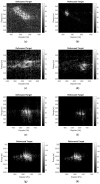Ground Moving Target Imaging via SDAP-ISAR Processing: Review and New Trends
- PMID: 33808244
- PMCID: PMC8036600
- DOI: 10.3390/s21072391
Ground Moving Target Imaging via SDAP-ISAR Processing: Review and New Trends
Abstract
Ground moving target imaging finds its main applications in both military and homeland security applications, with examples in operations of intelligence, surveillance and reconnaissance (ISR) as well as border surveillance. When such an operation is performed from the air looking down towards the ground, the clutter return may be comparable or even stronger than the target's, making the latter hard to be detected and imaged. In order to solve this problem, multichannel radar systems are used that are able to remove the ground clutter and effectively detect and image moving targets. In this feature paper, the latest findings in the area of Ground Moving Target Imaging are revisited that see the joint application of Space-Time Adaptive Processing and Inverse Synthetic Aperture Radar Imaging. The theoretical aspects analysed in this paper are supported by practical evidence and followed by application-oriented discussions.
Keywords: GMTI; ISAR; SAR; STAP; radar; radar imaging.
Conflict of interest statement
The authors declare no conflict of interest.
Figures




























References
-
- Carrara W., Goodman R., Majewski R. Spotlight Synthetic Aperture Radar: Signal Processing Algorithms. Artech House Signal Processing Library, Artech House; London, UK: 1995.
-
- Martorella M., Giusti E., Berizzi F., Bacci A., Dalle Mese E. ISAR based techniques for refocusing non-cooperative targets in SAR images. IET Radar Sonar Navig. 2012;6:332–340. doi: 10.1049/iet-rsn.2011.0310. - DOI
-
- Lazarov A.D., Minchev C.N. SAR Imaging of a Moving Target; Proceedings of the 2007 3rd International Conference on Recent Advances in Space Technologies; Istanbul, Turkey. 14–16 June 2007; pp. 366–372. - DOI
-
- D’Addio E., Bisceglie M.D., Bottalico S. Detection of moving objects with airborne {SAR} Signal Process. 1994;36:149–162. doi: 10.1016/0165-1684(94)90204-6. - DOI
-
- Raney R. Synthetic Aperture Imaging Radar and Moving Targets. IEEE Trans. Aerosp. Electron. Syst. 1971;AES-7:499–505. doi: 10.1109/TAES.1971.310292. - DOI
Publication types
LinkOut - more resources
Full Text Sources
Other Literature Sources
Miscellaneous

